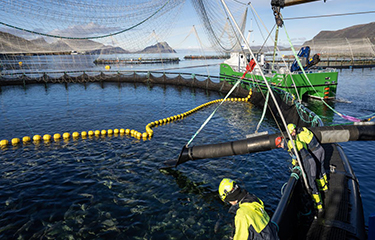Statt Torsk reports increased mortalities at two cod farms

Stokkeneset, Norway-based Statt Torsk has reported an increase in mortalities at two of its cod-farming sites.
The company reported that in June and July, its Stokkeneset location experienced a temporary increase in mortality that has since abated. According to a company press release posted to the Oslo Børs stock exchange, the economic consequences of the mortalities – the cause of which is still unverified – is estimated to be NOK 4.5 million (USD 440,000, EUR 402,000).
The mortalities at Rekvika, meanwhile, resulted in a lower harvest total. The company estimated that it would have a total harvest volume of 3,200 metric tons (MT) of whole-fish equivalent (WFE) from the site, but said it harvested 2,920 MT WFE, 280 MT less than it expected. The total financial impact of the mortalities at Rekvika will be NOK 7.5 million (USD 734,000, EUR 669,000), Statt Torsk said.
The cause of the Rekvika mortalities has been identified, and “appropriate measures” have been taken, Statt Torsk said, without elaborating.
The mortalities come after a challenging Q1 2023 for the firm, which Statt Torsk CEO Gustave Brun-Lie called “disappointing.” In a message covering the company’s results, Brun-Lie said the prices the company achieved for its cod were “significantly low, sometimes even lower than prices for wild-caught fish.”
“There are various reasons for this, but the fact remains that we have not yet achieved our goal of differentiating our product from other white fish products,” he said.
Brun-Lie said Statt Torsk has adjusted its production expectations, but must improve its control over its production volumes. He also said the industry was hurt by negative media coverage in the wake of farmed cod escapes in Norway, and sexual maturation issues that resulted in the Norwegian Directorate of Fisheries forcing fellow cod-farming company Norcod to cull fish.
The quarter still provided Statt Torsk with its highest-ever revenues and harvests. It posted NOK 36.6 million (USD EUR) in revenue in Q1 2023 on sales of 1,005 MT WFE of its cod. That revenue, however, came on low prices, which on average reached just NOK 36.00 (USD 3.53, EUR 3.21) per kilogram.
As a result of the lower prices for its fish, and the high cost of goods sold, the company posted an operating loss of NOK 15.4 million (USD 1.5 million, EUR 1.3 million) before the fair-value adjustment. After fair-value adjustment, the company posted an operating loss of NOK 2.3 million (USD 226,000, EUR 206,000).
Brun-Lie said the company must create new markets for its products in order to take advantage of some of the differeniating factors farmed cod has over wild-caught fish.
“Our fish is highly suitable for sushi and sashimi, which are experiencing rapid growth in seafood consumption globally,” he said.
The company should also take advantage of its extended freshness, more predictable year-round supply, and the absence of anisakis – a type of nematoid parasite found in wild-caught cod. A study of anisakidae parasites in retail cod, published in Food and Waterborne Parisitology, found as many as 20 percent of cod belly flaps at the Belgian retail level were infected with the parasite.
Brun-Lie said the young company - it was founded in 2014 - was bound to run into challenges eventually.
“We never intended for this endeavor to be a ‘walk in the park,’” he said. “Creating a new product is challenging and demands patience.”
Photo courtesy of Statt Torsk






Share